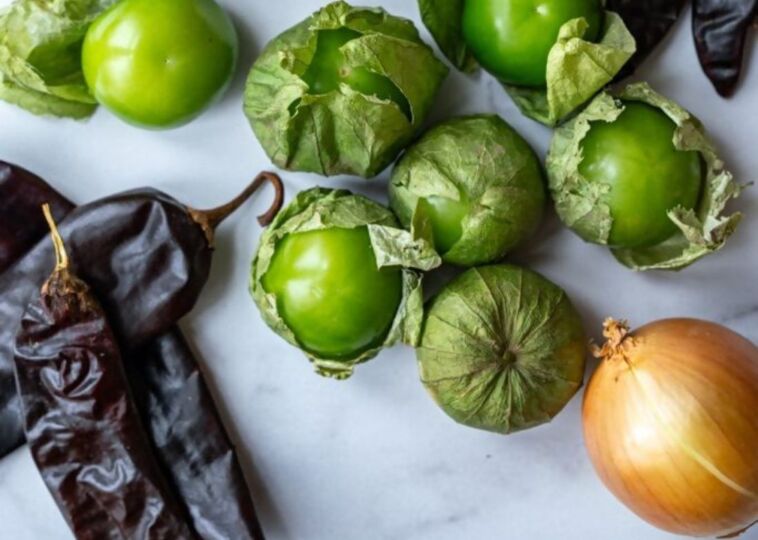Explore Exotic Veggies that will WOW Your Taste Buds!

Contents [hide]
Are you tired of the same old vegetables dominating your dinner plate? If your vegetable routine feels as bland as a soggy salad, it’s time to spice things up with exotic veggies that can make your taste buds dance.
Sure, we all have our favorites, carrots potatoes, nature has a treasure trove of unique, nutritious vegetables just waiting to make their de dive into some exciting options that will not only invigorate your meals By incorporating these exotic vegetables into your cooking routine, you’ll not only broaden your culinary skills Your taste buds,
Kohlrabi: The Versatile Veggie

Kohlrabi might look like an alien vegetable; this unique veggie, with its bulbous shape, is a culinary Chameleon. Kohlrabi, often called turnip cabbage, is one of the few vegetables used in almost every part of cooking.
The bulb itself can be eaten raw, offering a refreshing crunch. For those who prefer cooked vegetables, kohlrabi can be sautéed, steamed, or roasted, becoming tender and enhancing its subtle sweetness.
Sunchoke

Sunchoke, often mistaken for its exotic name, “Jerusalem artichoke,” has nothing to do with Jerusalem and isn’t an artichoke. Native to North America and belonging to the sunflower family, this root vegetable is a delightful surprise in healthy eating.
It has a subtly sweet and nutty flavor, often compared to a cross between a potato and a water chestnut. The best part? Sunchoke is as versatile as it is nutritious. It can be roasted, sautéed, or even eaten raw in salads, making it an easy addition to various dishes.
Nopales

Have you ever wondered how a prickly cactus could become a delicious and nutritious part of your diet? Enter nopales, the edible pads of the prickly pear cactus, a true culinary gem native to Mexico. Nopales come from a cactus plant that is endemic to Mexico.
This hardy cactus has been a staple in Mexican dishes since ancient times, thanks to its unique texture and versatile flavor. The spiny outer layer of the cactus is carefully removed, leaving behind the tender, green pads that are
Yardlong

Yardlong beans, also known as asparagus or snake beans, stand out from the usual bean crowd with their remarkable length and vigorous growth habits. Unlike common beans that grow in bushes, yardlong beans are climbing vines that can reach impressive heights.
This climbing nature makes them an excellent choice for vertical gardening or trellises, and their rapid growth is a boon for busy cultivators looking for a quick harvest. Don’t let their delicate appearance fool you; yardlong beans are a nutritional powerhouse.
Dulse

If you’ve ever explored the Atlantic or Pacific Oceans coastlines, you might have encountered a fascinating seaweed known as dulse. This vibrant red seaweed, often called the vegetable of the seas, is called sol in Iceland, and it’s celebrated for its exceptional health benefits and culinary versatility.
Packed with an impressive array of minerals and protein, dulse stands out as a superfood from the sea. Dulse is an incredible source of essential minerals. With such a high concentration, dulse can be a game-changer for those looking to boost their mineral intake naturally.
Samphire

Samphire’s natural environment gives it a briny, slightly tangy flavor that echoes the essence of the ocean. This makes it an excellent complement to seafood dishes, where it’s salty. It’s often used in salads, providing a crisp, vibrant crunch that contrasts beautifully with other ingredients.
To get the most out of samphire, lightly blanch it to reduce its saltiness, or use it raw for an intense flavor. It pairs wonderfully with lemon and garlic, which can help to balance its natural saltiness.
Celeriac

Meet celeriac, a root vegetable that’s as versatile as it is nutritious. Hailing from Northern Europe, celeriac offers a fantastic alternative to traditional potatoes, especially if you want to reduce your starch intake. Whether you enjoy it raw or cooked, celeriac can be a game-changer in your kitchen.
Unlike potatoes, celeriac contains minimal starch, making it a healthier choice for those watching their carbohydrate intake. Celeriac isn’t just a flavorful addition to your meals; it’s packed with essential nutrients. These nutrients prevent anemia, support bone health, and ensure proper bone metabolism.
Oca, A Versatile Potato Alternative

If you’re looking for a potato alternative that’s both nutritious and flavorful, Oca is your new best friend. But what sets Oca apart is its sweetness and tangy flavor, which can unexpectedly elevate your dishes.
When mixed with fresh greens and other salad ingredients, Oca adds a pleasant aroma and a more subtle and complex sweetness than potatoes. Its crisp texture and naturally tangy flavor make it a refreshing addition to any salad, adding visual appeal and a burst of flavor.
Fiddleheads

Have you ever encountered a vegetable that looks like a whimsical curl from a fern and wondered if it’s edible? Enter fiddleheads, the enchanting young shoots of the ostrich fern native to the Eastern United States. These delicate, coiled greens offer What Are Fiddleheads?
Fiddleheads are the unfurled, tender fronds of the ostrich fern, resembling little green scrolls or spirals. With a taste reminiscent of a cross between asparagus and spinach, fiddleheads bring an earthy and slightly nutty Why Are Fiddleheads Special? One of the standout features of fiddleheads is their impressive nutritional profile.
Romanesco: the Fractal Marvel

Have you ever wished for a vegetable that’s both visually striking and packed with nutrients? Enter Romanesco, the edible flower from the cauliflower family that hails from Italy. This vegetable is not just another green on your plate; it’s a marvel of nature, boasting a unique fractal pattern that will make your meals both nutritious and visually stunning.
Romanesco is typically available at farmers’ markets and specialty grocery stores, particularly during the fall and winter. Its unique appearance makes it a standout at any produce stand, so watch for this fractal marvel during your next shopping trip.


